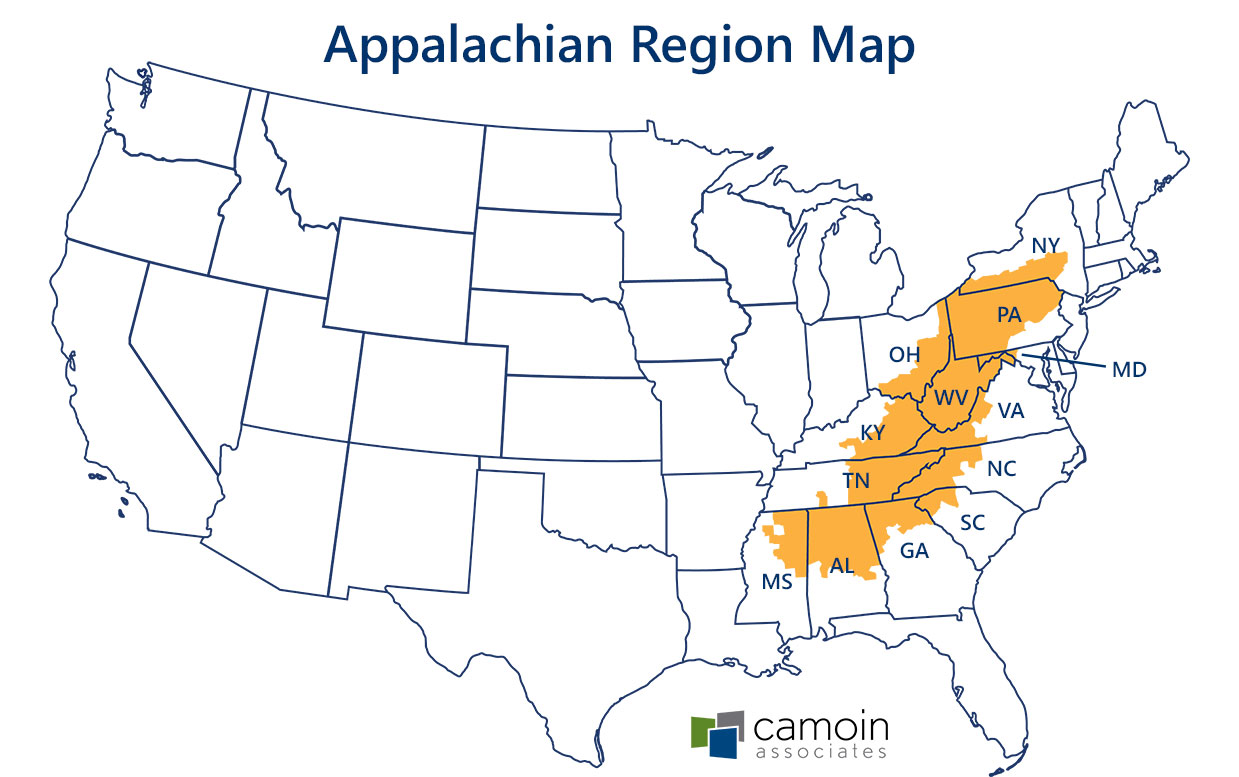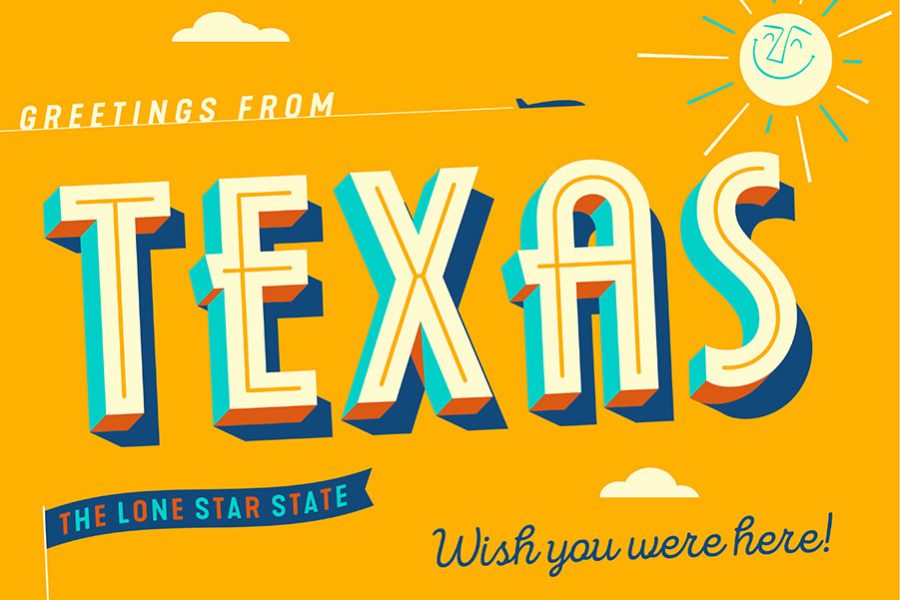 There are many reasons why an economic development project might benefit from spanning regional boundaries.
There are many reasons why an economic development project might benefit from spanning regional boundaries.
For communities focused on business attraction, access to a skilled regional workforce — not exclusively the local workforce — is one of the driving factors for decision-making around expansion and relocation. Labor markets are rarely isolated to one municipality, and with the average commute taking about 27 minutes, it is likely that many Americans cross a jurisdictional boundary to get to work.
For smaller communities, coordination across borders can help the public sector deliver services, strategize, and pursue funding more efficiently.
At a national level, we see the federal government prioritizing a regional approach to large-scale economic development initiatives. The Biden-Harris Administration’s Build Back Better Regional Challenge (BBBRC), which awarded $1 billion in grants specifically to regional coalitions, is an example of this priority in action.
However, a history of regional competition for resources instead of collaboration — combined with questions of organizational capacity, politics, and more — can make it difficult to kickstart strategic initiatives that involve more than one region.
Multi-Region Funding Opportunity Spotlight: Appalachia
An excellent example of the importance of multi-region collaboration for resources is the Appalachian Regional Initiative for Stronger Economies (ARISE) grant funding program, offered by the Appalachian Regional Commission (ARC).
ARC is a federal economic development partnership entity that serves 423 counties and eight Native American Tribal Communities across the Appalachian region, which stretches from southern New York State to northern Mississippi.
ARC offers grant opportunities to advance community and economic development initiatives across five focus areas:
- Building Businesses
- Workforce Ecosystems
- Community Infrastructure
- Regional Culture and Tourism
- Leaders and Local Capacity
ARISE is one of ARC’s newest grant opportunities. It aims to foster extensive regional economic transformation through collaborative efforts across multiple states. To date, ARC has invested $69.3 million in 24 projects across all 13 Appalachian states through ARISE. Examples of funded projects and their affiliated partners include:
- A new energy economy project with Reimagining Appalachia and ten Manufacturing Extension Partnerships to help small and medium-sized manufacturers access of grow within the clean energy and green technology sectors.
- A college and university health consortium project across six states to collaborate on strategy and implementation of healthcare worker training efforts.
- A regional transit enhancement plan across Ohio, Pennsylvania, and West Virginia to improve access and connectivity to jobs, training centers, and healthcare.
- A mobile platform development project that expands rural tourism economies in Ohio and Pennsylvania.
- A workforce development, leadership, and capacity building initiative that addresses the affordable housing crisis in four states.
Communities interested in pursuing ARISE funding must complete a project summary and concept paper (which are accepted continually on a rolling basis) before ARC invites them to submit a formal planning or implementation grant application. However, to do this, applicants must meet the following criteria:
- The project must address at least one of ARC’s five focus areas listed above.
- Projects should support communities within ARC’s regional footprint in at least two states.
- Project teams must assign at least one partner per state represented in the scope.
- Applications require a financial or resource match from non-ARC sources, such as state funding, other federal funding, or in-kind services.
So, where should communities begin when planning a multi-region project for ARISE or a similar funding program?
Scoping Your Multi-Region Project
All projects benefit when organizers, funders, and stakeholders are all on the same page with the effort’s overarching purpose and process. This becomes even more critical in multi-region projects where participants have overlapping missions and sometimes different priorities. It is easy for the scope to creep and alter the course of a project, so below are some considerations for groups looking to pursue multi-region projects:
Define Your Shared Purpose
Camoin Associates frequently works with clients looking to innovate through a regional lens on key issues that impact economic development, including workforce development, business attraction, and industry cluster coordination, to name a few.
At a project’s onset, a visioning exercise can be one of the most important first steps in planning an initiative that crosses state or regional boundaries. Because your team will likely need a project description to apply for funding, develop marketing collateral, and engage stakeholders, this is an opportunity to ensure internal and external teams have a common understanding of what you are pursuing together. Organizers and their partners should reflect on the following questions:
- Which stakeholders need to be at the table to help define this vision?
- What is the economic development challenge we all face and can realistically tackle together?
- What value would this initiative provide to residents, workers, businesses, and the community?
- What does success look like?
- What steps will move us toward the impact we hope to make through a collaborative project?
For those pursuing ARISE funding, it might take a couple of informal conversations with potential partners — individually or as a group — before outlining a scope of work and grant application approach.
Identify Your Lead Partner(s)
In the economic development space, it is not uncommon for multiple entities to do similar work in one community or region. Many hands make light work, but it is natural to be concerned about stepping on other organizations’ toes and what this might mean for a project’s success.
Start by taking stock of whose expertise the project needs to be successful, both from a strategic and operational perspective. Next, consider which organization has the momentum, funding, and staff capacity to lead project management and implementation, recognizing that this lead organization may not be the project’s original champion.
For organizations hoping to apply for an ARISE grant, this will be an important time to have honest conversations about what each partner can realistically contribute within the target timeframe to move the needle on a project.
Create a Project Budget and Identify Potential Sources of Matching Funds
Enlist expert advice to accurately map a budget for different initiative tasks, such as data collection, marketing, and design services. Discuss what partner support will look like across the region and seek out financial and resource commitments early — it might help with securing funding matches later.
Identify state-level funding sources and connect with related points of contact to understand how funding cycles will impact grant applications and the process of securing financial and resource matches. At the very least, these individuals may point you in the right direction if their departments are not the right funding fit.
Develop a Workplan
Figure out tasks, commit to a budget, and determine the workflow between partners. Will one lead organization complete all tasks, or will you split tasks up between several partners?
Set internal timelines to accomplish tasks, including opportunities to regroup as a project team. It may help to align project deliverables around existing touchpoints on the calendar that align with the economic development effort to keep momentum strong and build committed partnerships along the way.
For a more in-depth perspective on designing projects across multiple states, make sure to check out ARC’s Multi-State Collaboration Toolkit.
Let’s Get Started!
At Camoin Associates, we have seen regional stakeholders come together across borders on various initiatives to drive economic growth. The Northwest Commission in Pennsylvania hired our team as part of a larger consultant network that provides technical assistance to communities seeking ARISE funding.
If you work in an Appalachian community and hope to organize a project aligned with ARISE funding criteria, we would be happy to help you brainstorm some of the project elements above.
Finally, while your community must be located in one of ARC’s counties to be eligible for ARISE funding, our team hopes the considerations offered in this article help you and your colleagues think differently about ways to collaborate across borders to make an economic development project even stronger.
Below are two examples of Camoin Associates projects that drew on regional networks to drive change:
Example 1: Targeted Industries
Located approximately 40 miles from Boston’s life sciences hub (home of the world’s largest Life Sciences cluster), the State of New Hampshire recognized a unique opportunity to capitalize on its niche offerings in the industry.
With the help of the work completed by Camoin Associates’ Industry Analytics and Strategy Team, the New Hampshire Department of Business and Economic Affairs was able to better understand their state’s Life Sciences cluster as it related to the broader Boston metro area.
The industry assessment we completed found that New Hampshire’s growing presence of small- and medium-sized companies, historic strengths in manufacturing, and strong R&D capacity across its higher education institutions were among the factors that could position the state strategically in relation to the Boston Life Sciences cluster. Learn more.
Example 2: Supply Chain and Service Capacity
Before the COVID-19 pandemic, the Virginia Hospital and Healthcare Association (VHHA) hired Camoin Associates to analyze Virginia’s ability to respond to future surges in demand for PPE and analyze potential supply chain opportunities and competitive advantages of Virginia’s manufacturing base.
Then, one year after the pandemic began, Camoin Associates completed a statewide After-Action Report to learn from VHHA members about what had gone well, which challenges remained, and where there were opportunities for improvement in critical response areas.
Since VHHA spans the entire Commonwealth of Virginia, and some hospital systems serve cities that stretch across state borders, like the town of Bristol which sits directly on the Virginia-Tennessee border, the After-Action Report findings raised important considerations for future public health responses across multiple boundaries. Learn more.
To learn more about Camoin Associates’ strategic planning services or for assistance preparing a project for ARC’s ARISE funding, please contact Project Manager Lindsay Johnson at lindsay@camoinassociates.com.




